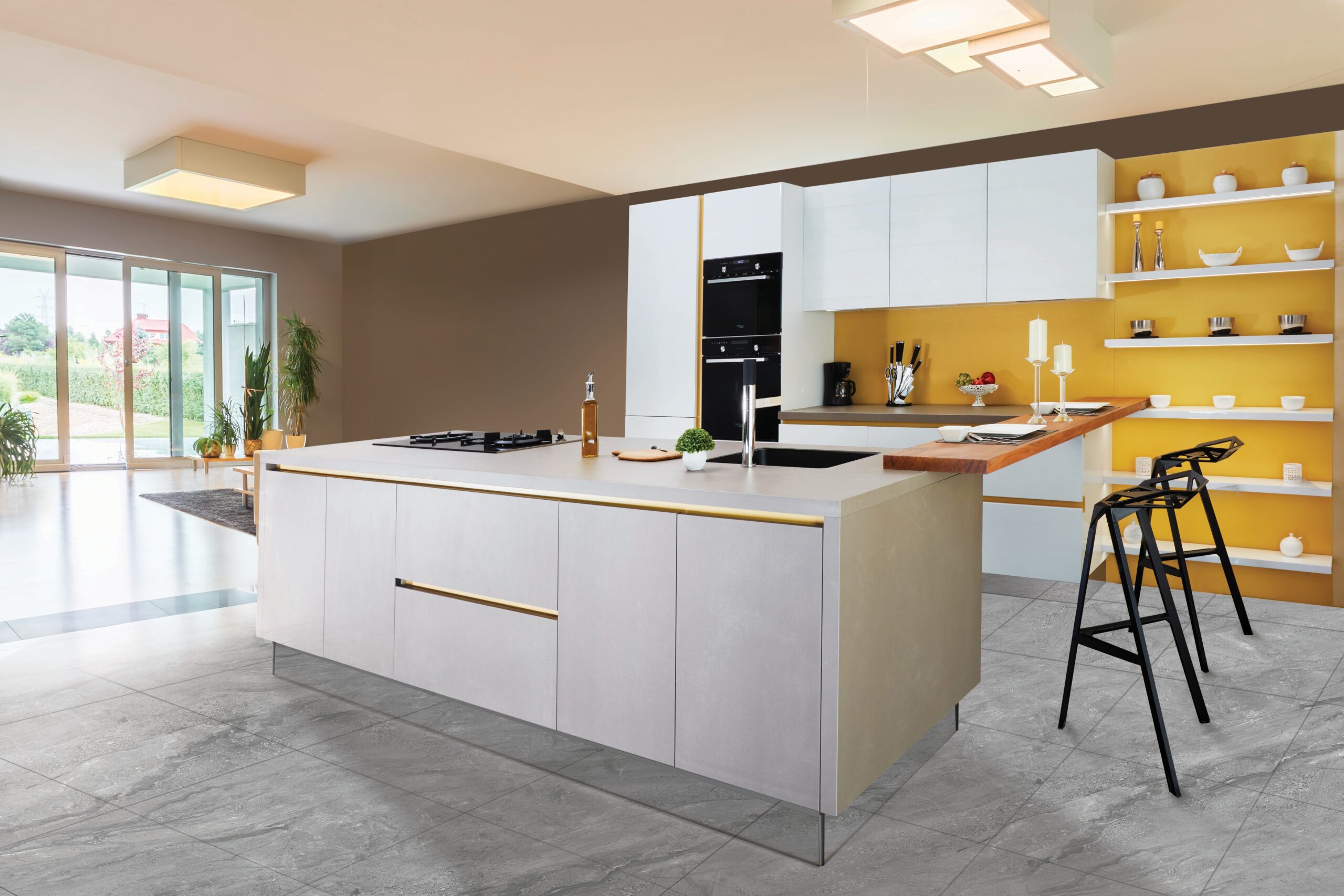Are you searching about How much is a kitchen island? Kitchen islands have become increasingly popular among homeowners who want to enhance the functionality and visual appeal of their kitchens. These versatile additions provide additional workspace and storage options, effectively transforming the kitchen into a more practical and visually appealing space. However, it is important to consider the associated costs before deciding to install a kitchen island. This article will explore the factors that can influence the price of kitchen islands, including the materials used, customization options, and the installation process. The goal is to provide readers with comprehensive information so that they can make well-informed decisions about their kitchen island investment, taking into account their budget and desired outcomes.
How much is a kitchen island
Factors Influencing Kitchen Island Costs
The cost of a kitchen island can be influenced by several factors.
Size and layout of your kitchen: Firstly, the size and layout of your kitchen play a significant role. The island size should be proportionate to the kitchen space, with rectangular islands suitable for regular-sized kitchens and U-shaped options for larger spaces. In smaller kitchens, a cart island may be the only viable choice due to its mobility and slim profile.
Choice of materials. The materials used for the island can contribute to its overall cost and aesthetic appeal. From wood to metal and granite, there are various options available, each with its features and finishes. Luxurious materials may come at a higher price, but it is possible to incorporate them within a budget by selectively splurging on elements like the countertop while opting for cost-effective storage solutions.
The functionality of the island: The intended functionality of the island also affects the cost. A custom design may be unnecessary if the island is primarily for storage and essential utilities. However, if additional features like a cooktop, electrical outlets, or a sink are desired, customization to accommodate those requirements will come at an extra cost. Including features such as ranges, ovens, dishwashers, garbage disposals, and lighting will contribute to the overall expenses, with average prices varying for each feature.
Labor costs: Labor costs are another consideration. Hiring professionals, such as electricians, architects, carpenters, plumbers, and kitchen designers, may be necessary depending on the complexity of the installation and additional features. Labor costs can vary based on hourly rates and the type and location of work.
Permits, infection, and fees: Permits, inspections, and fees can also influence the cost of a kitchen island project, which can vary depending on the location. These costs should be factored in when budgeting for the island.
Average cost ranges
The cost of a kitchen island can vary depending on factors such as its size, materials used, and customization options.
Smaller islands: On average, smaller islands with basic features and materials typically range from $1,000 to $5,000. These islands provide extra workspace or storage and come with standard features.
Mid-Sized islands: For mid-sized islands with higher-quality materials and some customization possibilities, the average price usually falls between $5,000 and $10,000. These islands offer more design flexibility and may include personalized elements such as built-in appliances or unique design features.
Larger islands: Larger islands made of premium materials with extensive customization options often have an average cost ranging from $10,000 to $20,000 or more. These islands often serve as the focal point of the kitchen and can feature luxurious elements like custom cabinetry, high-end countertops, intricate craftsmanship, and specialized storage solutions.
Additional cost considerations
- Hiring professionals for installation: Skilled labor may be required, especially for plumbing or electrical components. Hiring licensed professionals such as plumbers and electricians ensures proper connections and compliance with safety standards.
- Labor costs: Allocate a portion of the budget for skilled labor to ensure a successful installation. Experienced professionals optimize functionality and appearance while avoiding unexpected expenses or complications.
- Materials and finishes: Different materials and finishes can influence the cost of the island. Higher quality or customized options often come at a higher price.
- Customization and design: Custom-made islands for unique spaces can involve additional labor costs and more expensive materials like granite or marble.
- Additional features: Consider the cost of adding features such as ovens, range hoods, cabinetry, countertops, breakfast bars, and flooring.
- Hiring a kitchen designer, plumber, and electrician: Depending on the complexity of the project, hiring professionals for design, plumbing, and electrical work may be necessary.
- Shipping or transporting the kitchen island:
There may be costs involved in shipping or transporting the kitchen island, which can depend on factors such as its size, weight, and delivery distance.
Additional costs for removing existing cabinetry or preparing the space:
The removal or relocation process may entail additional expenses, such as labor or disposal fees.
Types of Kitchen Islands and Their Cost Range
Kitchen islands come in a diverse range of shapes and sizes, each offering unique advantages and considerations in terms of cost.
Galley islands: These long and narrow islands are well-suited for galley kitchens or larger open-plan kitchens. They provide ample space for cooking, preparation, and seating. Prices typically range from $500 to $5,000.
L-shaped islands: With their versatility and spaciousness, L-shaped islands offer room for built-in appliances, fixtures, and seating. They can serve as the primary work area in larger kitchens and are generally priced between $1,000 and $7,000.
Rectangular islands: Stationary and customizable, rectangular islands can be tailored to different sizes and features. They are suitable for open floor plans and can act as a centerpiece in the kitchen. Prices typically fall between $500 and $1,500.
Rolling cart islands: Rolling cart islands are portable and ideal for kitchens with limited space. They provide flexibility and can be easily moved around. Prices vary, starting from around $100 for basic prefabricated carts and going up to $2,500 for more elaborate, full-sized carts on large casters.
U-shaped islands: Custom-built U-shaped islands are the most expensive option due to their size and extensive features. They are meticulously designed to fit the kitchen layout, accommodating appliances, multiple prep areas, storage, and seating. The cost usually ranges from $2,000 to $9,000, potentially higher if high-end appliances and finishes are included.
Tips for budgeting and cost savings
- Conduct thorough research and compare prices from various suppliers and manufacturers to find the best deals and most competitive prices for materials and components.
- Explore alternative materials or finishes that offer a similar aesthetic to more expensive options but at a lower cost.
- Collaborate with your designer or contractor to optimize the design and layout of your kitchen island, minimizing wasted space and maximizing material efficiency to reduce material waste and potentially lower labor hours.
- Consider taking on certain DIY tasks, such as painting, hardware installation, or assembling pre-fabricated components.
Conclusion
After reading the How much is a kitchen island the conclusion, it’s crucial to acknowledge the potential of kitchen islands in enhancing functionality and visual appeal while adding value to your kitchen. Although the average cost for a bare kitchen island falls between $3,000 and $5,000, it’s important to note that additional features can lead to other expenses. Nonetheless, investing in a kitchen island is justified as it greatly enhances the cooking experience and boosts the overall value of your home. Taking the time to carefully consider the type of island that suits your kitchen layout and specific requirements, be it galley, L-shaped, rectangular, rolling cart, or U-shaped, will help you strike a balance between cost and desired features. By making well-informed decisions, you can create a unique kitchen island that aligns with your budget and becomes a standout feature in your kitchen.marketplaces, classified ads, and local retailers specializing in used or refurbished furniture.























